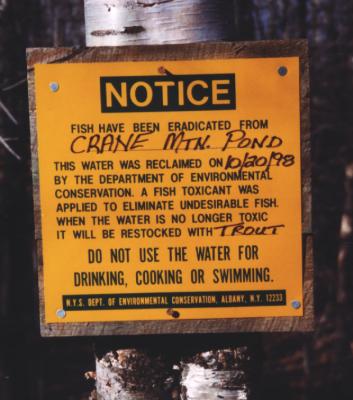
located at 2,600 feet in elevation, high on the slopes
of the 3,200-foot Crane Mt, in the southern Adirondacks.
November 22, 1998.
 |
| This sign was found near Crane Mt. Pond. The pond is
located at 2,600 feet in elevation, high on the slopes of the 3,200-foot Crane Mt, in the southern Adirondacks. November 22, 1998. |